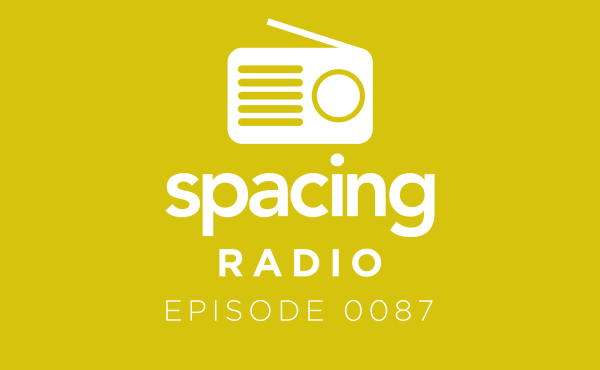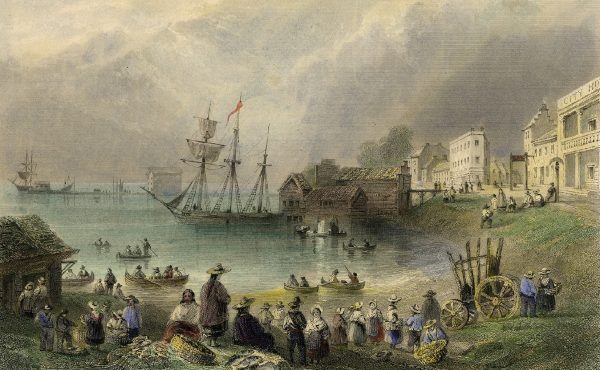The Architecture for Humanity discussion I attended last week, titled “Open Sourcing City Hall,” really got me thinking about how hard it can be to get information out of the government. For a regular citizen, unless projects are covered by the media, their progress is often left unknown. The funding for certain projects is often unclear and where our tax money goes is frequently a thing left to surprise.
So when host Patrick Connolly showed us a video of a speech by Andrew Mclaughlin, former head of global public policy for Google, and current deputy chief technology officer for the Obama administration, Government 2.0 began to make sense. As he spoke at an Expo in Washington of how the American government is trying to be more transparent and inclusive by sharing all of its municipal and federal information, I immediately thought how amazing something like that would be here at home.
It goes beyond the current method of civic engagement of writing letters upon letters or making multiple phone calls to find out what’s being done about a certain issue.
Government 2.0 is the concept of a web-based service that allows access to government records such as crime, city services, and projects that are underway. But beyond access to those records, it gives you the ability to interact in a social media platform to discuss the issues and their progress.
As Connolly said, it’s a way for people to take pride in their community by getting involved and a method of civic engagement that could spread to those who, in the past, would simply complain about problems in their area. This is a way to help get something done.
The City of Toronto has started down this path with their recently rolled out 311 service, which, in theory, allows people to report problems and track the solution with a tracking number they are given. (It’s a lot like how Purolator allows you to track where those killer black pumps you ordered off eBay are and when they will get to you.)
It’s a great step forward; the only thing is that, unless you have that tracking number, you have no idea what’s been reported or what’s being done.
Most of everything to do with Toronto is available on the City’s web site, but all the information is relatively spread out and takes time to wade through to get what you’re looking for.
“Having that information there is great, but it’s how you access it that matters,” said Connolly, adding that if you just throw up a bunch of PDFs people aren’t going to be interested in sorting through the jargon to find out what’s relevant to them.
Of course, the best way to utilize these pieces of information would be to allow tech-savvy individuals access to them, through a Creative Commons type license, to create applications. Which is just what happened after the District of Columbia uploaded its Data Catalogue.
Apps for Democracy was a design challenge geared towards anybody with a knack for app creation to use the stats from the government database and display them in a useful and helpful method, and the added bonus of being able to access it on a smart phone.
There are lots of cool creations in the Washington area: DC Bikes shows bike routes compared to locations of bike theft; Stumble Safely offers a map of bars, metro stations and recent crime reports in the neighbourhood; and Park it DC helps you find a parking spot based on real-time data about parking meters.
SeeClickFix (pictured above) is one of a few websites that allows citizens to view a map of their neighbourhood, or city, and see all of the 311 and 911 calls in their area. It’s a way for citizens to stay connected to their community, while at the same time being able to report something that is broken or damaged, or get out the tools needed to fix it themselves.
Toronto has its own section on SeeClickFix, but because City Hall doesn’t have an account with the site, our municipal government cannot moderate the issues, or provide progress.
The bonus of programs like these is not only that you can see and report problems in your neighbourhood, but you can see as they get fixed.
“People see that things are getting done,” said Connolly. “It’s very empowering, and they report more.”
In order for tools like this to work here, the City would have to become more open and inclusive to outside knowledge, accepting that local communities have views that need to be heard, and skills that can be used. A cultural shift has to happen so that the public voice is more accepted in policy-making. People need to feel welcome, and see that it’s not a one-sided conversation. And, of course, the government needs to be completely willing to offer its data in downloadable packages for creators to build maps and do as they will with the information.
Tools like these could change Toronto’s as we know it.





3 comments
Toronto’s open data initiative, http://www.toronto.ca/open/, is a major step in the right direction for Torontonians.
The city could make more data available and at a quicker pace but they’ve begun and with the information accessible, smart folks all over can build useful online applications to report, monitor, and encourage positive developments in the city. And not just websites to track potholes and brine-y corners but handy things like knowing how far the next 501 car is from your stop.
Vancouver has a good initiative and developer community underway. We could look west for ideas.
Total aside but the proper word in this sentence — ‘…the best way to utilize these pieces of information would be…’ is *use*.
Utilize has a time and place but, despite its rampant popularity, 9 times out of 10 gets thrown in to make a sentence only sound smarter and more sophisticated.
I think that this would be a great idea. Finding information can be a PITA and hiding actions is all to easy.
Where are these events and discussions taking place ?
I have been reading and watching a few Government 2.0 initiatives and would love to discuss this with Torontonians.